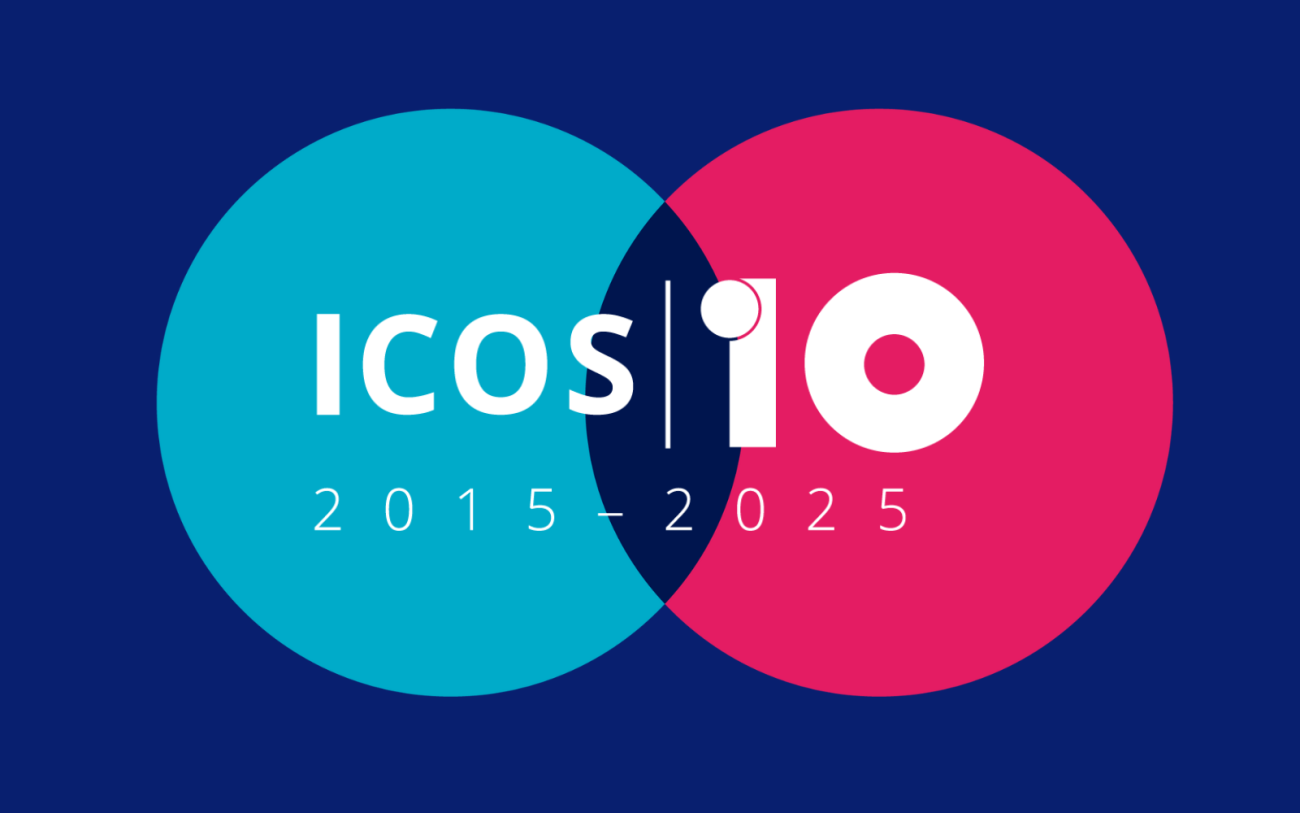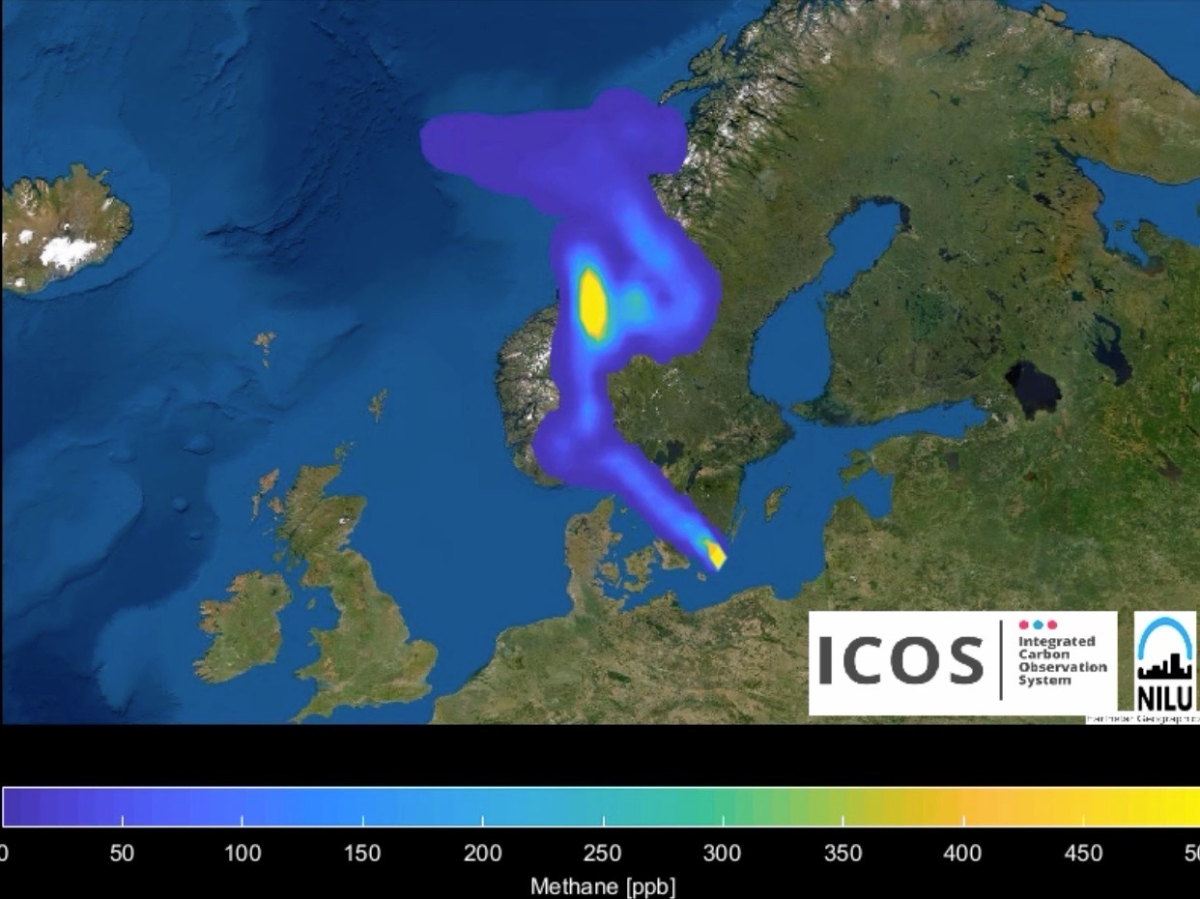
ICOS data provides vital insights into the impacts of major global events on greenhouse gas emissions and the carbon cycle. From quantifying the atmospheric emissions of the Nord Stream pipeline leak to assessing carbon uptake during extreme droughts and measuring the reduction in CO₂ emissions during COVID-19 lockdowns, ICOS has enabled scientists to respond rapidly with high-quality, near-real-time observations.
These data have also supported the publication of scientific studies that offer deeper insight into the events. The studies underscore the essential role of long-term, standardised greenhouse gas monitoring in understanding how human activities and environmental disturbances affect the climate system.
Here's a short look back into some of the major global events that were studied using ICOS data and utilised expertise from the community. The text excerpts below are from the news archive, and the link to the original news item can be found below each text excerpt.
This story is part of a series created for the 10-year anniversary of ICOS, looking back at a decade of ICOS science and achievements. Read the rest of the stories here.
ICOS data was used to study the impacts of COVID-19 lockdowns in Europe
As COVID-19 first hit Europe in the spring of 2020, most countries laid out strong restrictions to limit the spread of the virus. Human economic activity and mobility in cities stopped almost instantly, and many people had to move their work from offices to homes.
An international study led by ICOS scientists highlights the importance of human behaviour in the efforts to cut down CO2 emissions. COVID-19 lockdown measures decreased emissions in European cities by 5% to 87% depending on the area. In four cities, emissions remained surprisingly low even after restrictions were lifted.
Read the full story: New ICOS research shows: COVID-19 lockdown cut up to 87% of carbon dioxide emissions in European cities (22 May 2022) https://www.icos-cp.eu/event/1168 and ICOS study shows clear reduction in urban CO2 emissions as a result of Covid-19 lockdown (13 May 2020) https://www.icos-cp.eu/event/933

ICOS measurements show huge methane peaks in the atmosphere after Nord Stream leak
Due to the damage to the Nord Stream gas lines in the Baltic Sea, an enormous amount of methane gas was released into the atmosphere. The leak was estimated, at the time of the eruption, to equal the size of a whole year's methane emissions for a city the size of Paris or a country like Denmark. The methane emissions were confirmed by ICOS ground-based observations from several stations in Sweden, Norway, and Finland. Observation satellites were most probably not able to see the emission leaks, because the weather was cloudy.
Read the full story: ICOS measurements show huge methane peaks in the atmosphere after Nord Stream leak (30 September 2022) https://www.icos-cp.eu/event/1221

Methane emissions of the Nord Stream gas line leak estimated in a Nature study
The Nord Stream gas pipelines in the Baltic Sea were damaged in on 26 September 2022, leading to the release of an enormous amount of methane into the atmosphere. A new study, published in Nature, has now estimated the quantity of methane emitted due to the leaks. The article features contributions from several scientists within the ICOS community. Data from ICOS stations in Norway, Sweden, and Finland were used in the modelling.
The study employed multiple methods to quantify methane emissions from the Nord Stream pipeline leaks. Simulations of pipeline rupture emission rates were conducted and integrated with estimates of methane dissolution and sea-surface outgassing. These modelled atmospheric emissions were then compared with top-down, point-in-time emission rate estimates. Cumulative emission estimates were derived from airborne, satellite, and ICOS tall tower data.
Read the full story: ICOS data helped quantify methane emissions from Nord Stream pipeline leaks (5 February 2025) https://www.icos-cp.eu/news-and-events/news/icos-data-helped-quantify-methane-emissions-nord-stream-pipeline-leaks
Carbon uptake impacted by extreme drought studied in 17 studies bringing together over 200 scientists
In summer 2018, temperature records were broken in many regions of Central Europe and the United Kingdom, fires broke out in the Nordic countries, and several countries were affected by crop failures.
The 17 study results published in a special issue of Philosophical Transactions B show how vegetation in Europe responds to drought. The studies cover areas from Spain to Sweden and Finland, and from the Czech Republic through Germany, France and Belgium to the Netherlands and the UK. The drought studies provide crucial knowledge when trying to minimise the negative effects of the climate change. (--)
The 17 studies represent the work of over 200 scientists within the ICOS research infrastructure, representing all European top universities and research institutes. The scientists participating in the research effort cooperated extremely well, gathering a vast amount of data, points out Alex Vermeulen, co-organiser of the study and Director of the ICOS Carbon Portal: “We had open data exchange during process, resulting in the unique data sets openly available through ICOS Carbon Portal”. The first data sets were available already within 6 months since starting the initiative.
Read the full story Drought in Europe decreases carbon uptake and crop yields (7 September 2020) https://www.icos-cp.eu/event/975
Drought studies continued in 2022
The year 2022 saw record-breaking temperatures in Europe during the summer and autumn. Close to 30% of the European continent was under severe summer drought. A study led by ICOS scientists shows that the extreme conditions lead to a reduced net biospheric carbon uptake in summer (56-62 TgC) over the drought area. This reduction of uptake was more than the yearly emissions of the country of the Netherlands and about 80% of the total yearly emissions of France. (--)
The study “Temperature extremes of 2022 reduced carbon uptake by forests in Europe”, published in Nature Communications, brought together close to 100 scientists, technicians and coordinators from the ICOS community. The work was a continuation of the Drought 2018 study, which was done partly with the same people and using similar methods and analyses.
Read the full story Extreme drought reduced carbon uptake by forests in Europe – plans to mitigate climate change through forests are vulnerable (8 December 2023) https://www.icos-cp.eu/news-and-events/events/extreme-drought-reduced-carbon-uptake-forests-europe-plans-mitigate-climate
